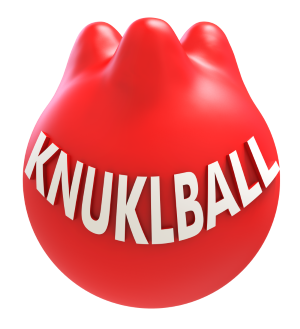Using the KNUKLBALL for Trigger Point Therapy
What Are Trigger Points?
Trigger points are tight, tender knots or lumps within the muscle tissue. They often cause localized soreness or achiness—without any clear physical trauma. These spots may feel stiff, sensitive to touch, or painful when pressed.
Why Should I Be Concerned?
Untreated trigger points can lead to:
- Pain and stiffness
- Limited mobility and reduced performance
- Decreased range of motion
- Lower quality of life
They can also:
- Increase risk of injury due to poor muscle tissue quality
- Disrupt circulation and impair mobility
- Contribute to chronic pain, poor posture, sleep issues, and elevated stress
What Causes Trigger Points?
Trigger points may form due to:
- Overuse or repetitive stress
- Overtraining or injury
- Poor posture and body alignment
- Muscle imbalances and poor conditioning
- Scar tissue or trauma
- Emotional stress and anxiety
When muscles are overworked or under strain, their fibers can "stick together," creating adhesions or knots that restrict normal function.
How to Use the KNUKLBALL (KB) for Trigger Point Release:
- Position: Place the KNUKLBALL against a point of leverage (floor, wall, or in-hand) and align it with the area of discomfort or tension.
- Apply Pressure & Move Slowly: Using moderate, tolerable pressure, slowly pivot and move to allow the knuckles to probe. You're looking for spots that feel tender, tight, achy, or painful.
-
Pause & Compress: When you find a trigger point or spot, pause movement and gradually increase pressure. This compression temporarily restricts blood flow, helping to deactivate the trigger point and relax the area.
- Hold: Maintain steady pressure for about 15-30 seconds. You may gently increase intensity if needed.
- Release: Slowly release pressure to restore blood flow and promote muscle recovery.
-
Repeat or Move On: Slightly change the orientation of the knuckles to better locate and address the area or move to a new area. You should begin to feel noticeable relief.
Video: Trigger Point Relief - Glutes

